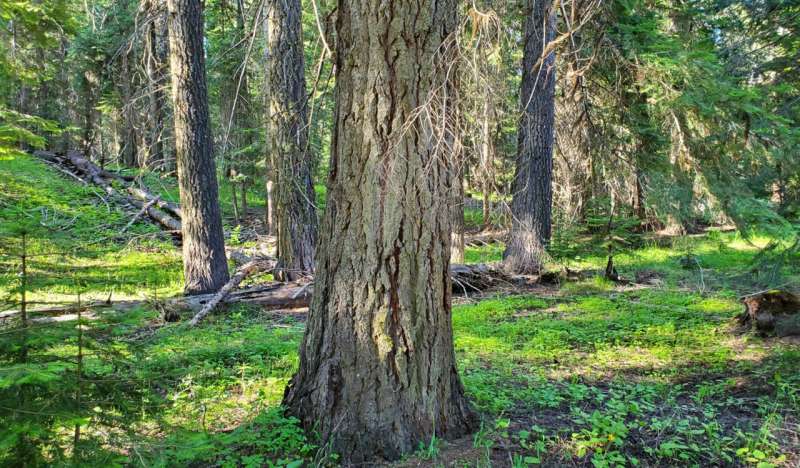This article has been reviewed according to Science X's editorial process and policies. Editors have highlighted the following attributes while ensuring the content's credibility:
fact-checked
proofread
Protecting big trees for wildlife also benefits climate, says study

Large trees offer major solutions to the climate and biodiversity crisis that are needed now. As President Biden calls for protecting mature and old growth trees on Federal lands, the study describes synergies between protecting these disproportionately valuable large trees and forest resilience goals, providing common solutions for these urgent challenges.
An earlier analysis found that large trees protected by the "21-inch rule" account for just 3% of total stems in the affected forests but hold 42% of the total aboveground carbon. Rather than continuing to protect these inherited carbon and biodiversity treasures, the United States Forest Service recently relaxed the 21-inch rule opening the door to large tree logging across millions of acres of National Forest lands east of the Cascades Crest in Oregon and Washington.
The justification for weakening the screens-competition between large trees, is not supported by the new analysis. Large-scale cutting of even some of the existing big trees would eliminate these carbon stores while releasing vast amounts of carbon dioxide to the atmosphere when we need to have greater sequestration by natural systems to stabilize Earth's climate.
Interest is growing in policy opportunities that align biodiversity conservation and recovery with climate change mitigation and adaptation priorities. The authors conclude that "21-inch rule" provides an excellent example of such a policy initiated for wildlife and habitat protection that has also provided significant climate mitigation values across extensive forests of the PNW Region.
"These are public lands that are providing a natural climate solution and performing multiple additional services at no cost. We suggest policy to keep existing forest carbon stores out of theatmosphere and accumulate additional amounts while protecting habitat and biodiversity," said David Mildrexler, lead author of the study.
"There is no action required from us but to leave these large trees standing so they can continue to store and accumulate carbon for climate mitigation and provide critical habitat," said co-author Bev Law.
The study is published in the journal Conservation Science and Practice.
More information: David J. Mildrexler et al, Protect large trees for climate mitigation, biodiversity, and forest resilience, Conservation Science and Practice (2023). DOI: 10.1111/csp2.12944
Provided by Conservation Biology Institute

















